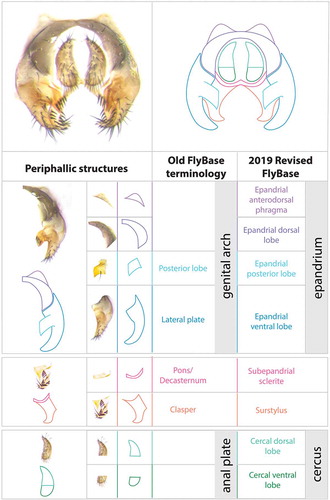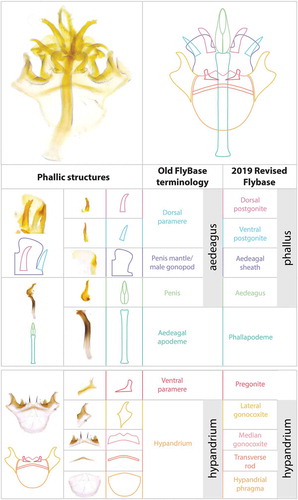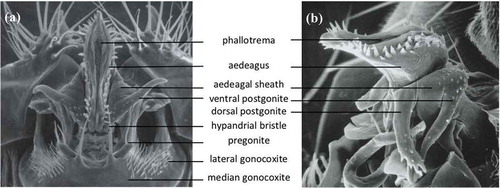Figures & data
Table 1. Definition of the terms in the standardized nomenclature.
Table 2. Table of correspondence between terms previously used in publications and term of the standardized nomenclature.
![Figure 1. (a) Light microscope preparation of the entire male terminalia of D. melanogaster Canton S. (b) Caudolateral view of the periphallic structures. (c) Ventrolateral view of the phallic structures. Scale bars are 100 μm. Note that the exact size and shape of terminalia structures, such as the epandrial posterior lobe, vary within D. melanogaster [Citation27,Citation28].](/cms/asset/b2327cd5-5121-4d28-b28f-544bfb7d7619/kfly_a_1653733_f0001_oc.jpg)



![Figure 5. Musculature of the phallic structures. Same diagram of cuticular parts as in Figure 3 (ventral view). Muscles are indicated in distinct colors and numbered I to VI [Citation18]. These muscles are bilateral. For sake of clarity, muscles are shown either on the left or on the right side of the diagram. See Table 1 for muscles description.](/cms/asset/866c45b4-bbbd-4cfa-8b1c-54d145ee15e5/kfly_a_1653733_f0005_oc.jpg)
